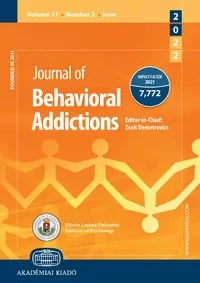Trajectory of problematic smartphone use among adolescents aged 10–18 years: The roles of childhood family environment and concurrent parent–child relationships
Trajectory of problematic smartphone use among adolescents aged 10–18 years: The roles of childhood family environment and concurrent parent–child relationships
Author(s): Xiaoxiong Lai, Shunsen Huang, Chang Nie, Jia Julia Yan, Yajun Li, Yun Wang, Yuhan LuoSubject(s): Behaviorism
Published by: Akadémiai Kiadó
Keywords: problematic smartphone use; developmental trajectory; childhood family environment; parent–child relationship
Summary/Abstract: Background and aims. Adolescence is a period of high incidence of problematic smartphone use. Understanding the developmental trajectory of problematic smartphone use in adolescence and its influencing factors could guide the choice of timing for prevention and intervention. This study fitted the growth trajectory of problematic smartphone use among adolescents and examined its associations with the childhood family environment and concurrent parent–child relationships. Methods. Using a cohort sequential design, we investigated 2,548 Chinese adolescents and their parents three times in three years. Multiple group multiple cohort growth models were used to fit the growth trajectory. Results. The quadratic growth trajectory of problematic smartphone use in adolescents aged 10–18 years showed a clear increasing trend, with a possible decreasing trend in late adolescence or early adulthood. Early life socioeconomic status, childhood family unpredictability, and the concurrent parent–child relationship had unique impacts on the development of problematic smartphone use during adolescence. Discussion and conclusions. Early adolescence is a favorable time for problematic smartphone use prevention and intervention. A supportive family environment should be maintained throughout the different developmental stages of children and adolescents.
Journal: Journal of Behavioral Addictions
- Issue Year: 11/2022
- Issue No: 2
- Page Range: 577-587
- Page Count: 11
- Language: English

